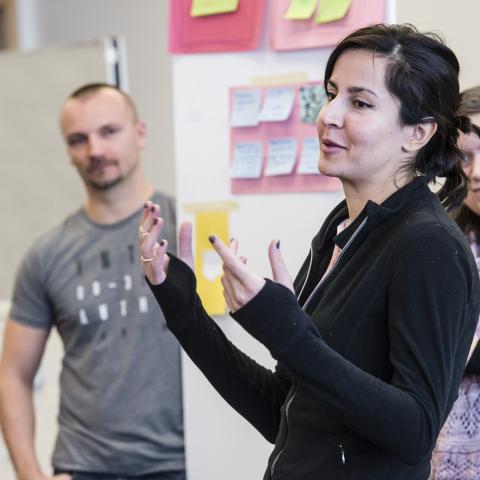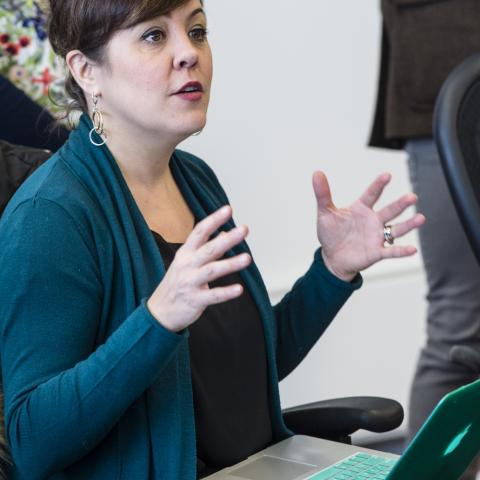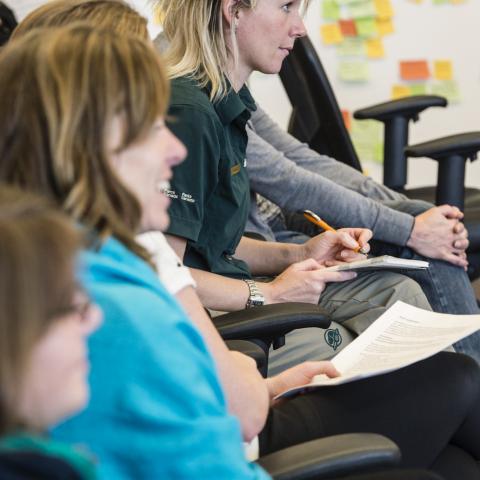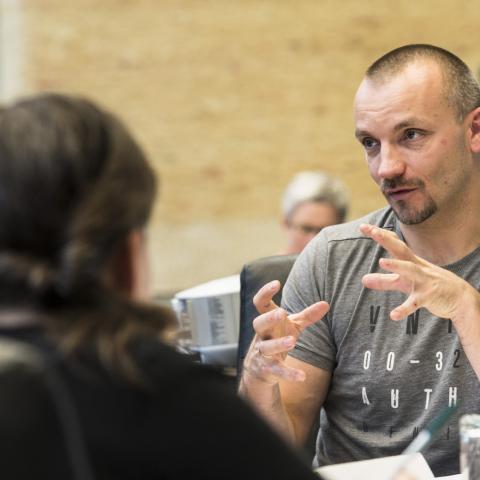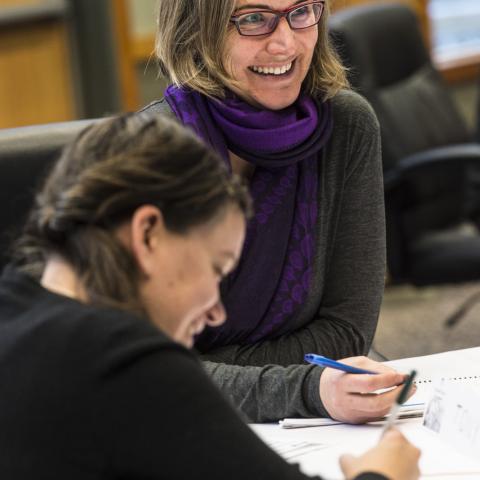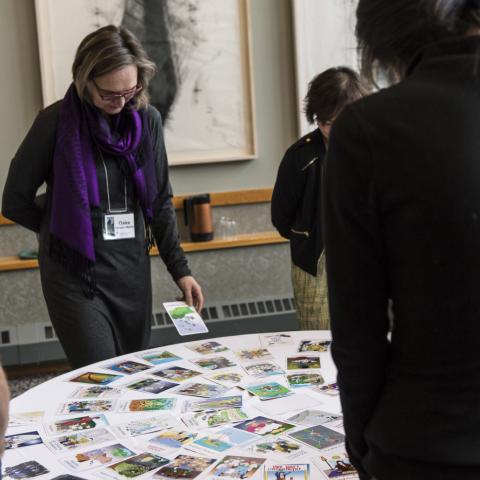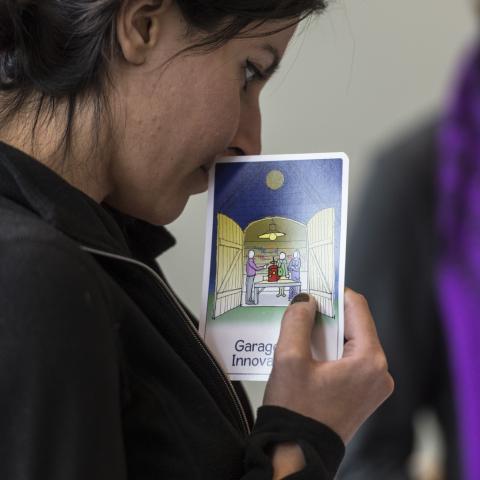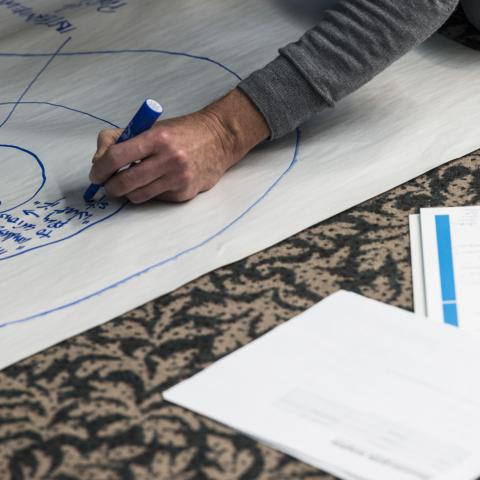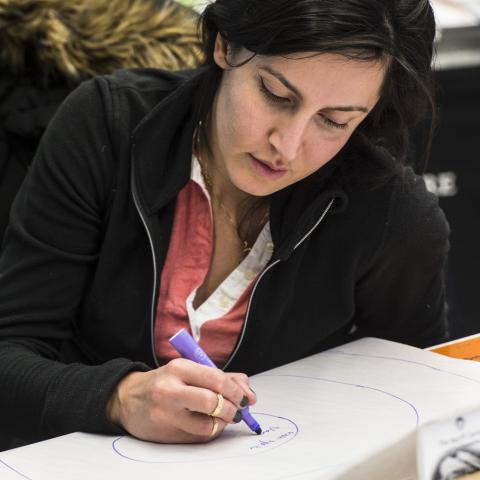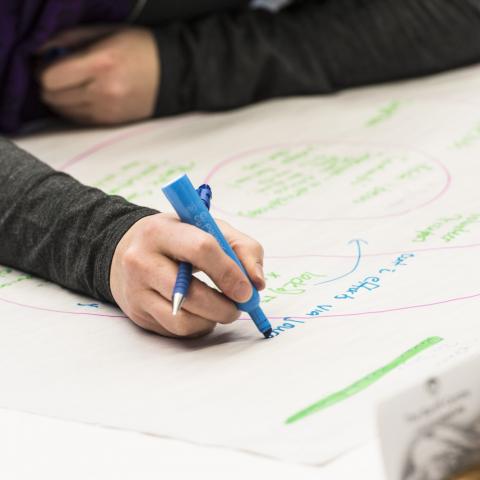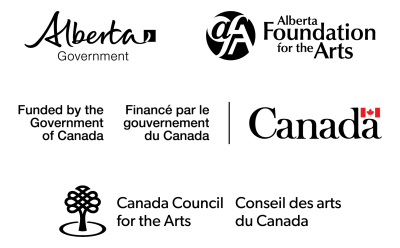Lead in Real Time with a User-Centred Approach
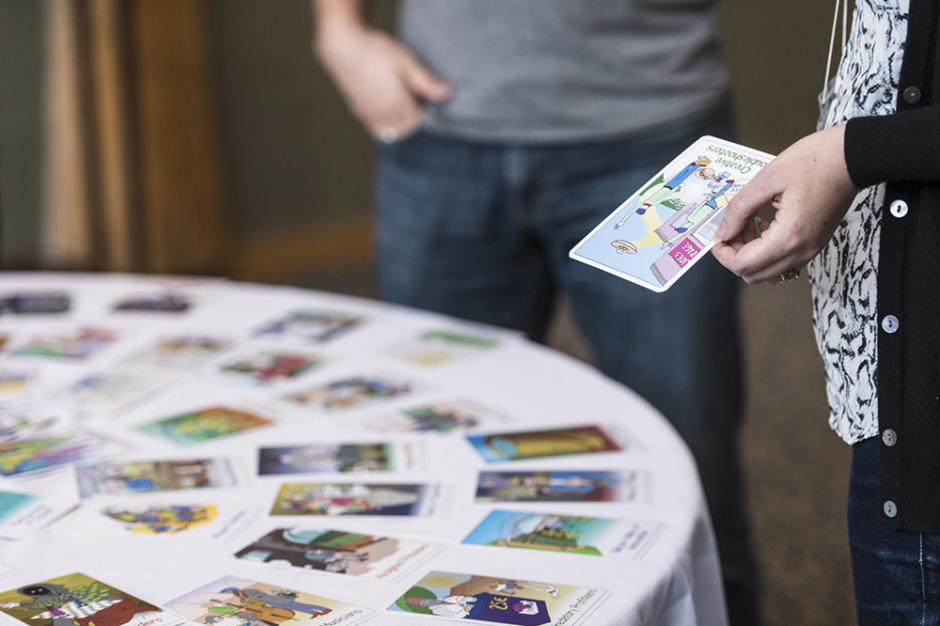
A composed cohort stands alongside a prototype featuring Rocky Mountain Soap Company (RMSC) products presented with fruits and vegetables in a mock urban, market setting. Across the room, a Dragon’s Den-style panel awaits the group’s presentation, including RMSC’s Chief Marketing Officer, Melanie McKenzie.
As part of The Banff Centre’s four-day Leading by Design program, the group was tasked to look at how RMSC can share their toxin-free story with existing customers and first time store visitors. Just that morning the group was frantically testing ideas in the Banff Avenue shop; I catch them for a quick interview as they take a brief moment to breathe prior to the pitch.
“Our opportunity was to develop a service that referenced the freshness of the products and shorter shelf life resulting from the fact that Rocky’s products are free from the synthetic ingredients found in other bath and body products. The fact that products have a shelf life and expiry date shows its very fresh and organic nature, which is a source of great value to consumers,” said Leading by Design participant Claire Temple-Oberle. “One thing that we felt was important was associating the soap with other organic products and natural and fresh ingredients in an appropriate setting.”
The team worked with Banff Centre Leadership faculty to examine how design thinking looks at problems in new ways by gathering a variety of perspectives. The hands on approach of the program saw participants review the RMSC business plan, gather insights and observations, develop ideas, create prototypes, test for feedback, then pitch live to the client before debriefing the process. The goal is to put ideas into the world faster to learn about strengths and weaknesses.
The RMSC has grown from a 10,000 square foot shop with offices in Canmore, Alberta to 10 stores and an 18,000 square foot workshop. Over the years, they have become increasingly committed to removing toxins, not only in their products, but from their supply chains and locations. Several in-store ideas included streaming a live link to the factory where the soap is being made, a window display chalkboard showing when the next product shipment was arriving, and information on the wrapper that outlines the expiration and production dates.
“We wanted to show how rapidly produced the products were and how in demand they were,” said Mary Bradshaw.
A subscription service that would allow customers to get a regular delivery of fresh soap in the mail also resonated. Also, soaps could be slightly smaller to ensure they arrive seasonally.
“It’s a similar idea to getting your farm box, organic vegetables delivered each month,” said Pawel Odrzygozdz, Leading By Design program participant.
RMSC has a growing body of fans signed up to their Toxin Free Movement rewards program, and have rolled out a new toxin-free store concept starting with the flagship store in Canmore, and recently in Edmonton and Vancouver. Getting users and the public engaged in this movement is the challenge.
“In such a short amount of time, your instincts have captured insights that our team has been considering, and have validated our positioning and brand story,” said McKenzie. “Engaging customers and other community stakeholders in the conversation will be necessary to generate real connections and create real value as we live up to our promise to remove toxins from our world.”
